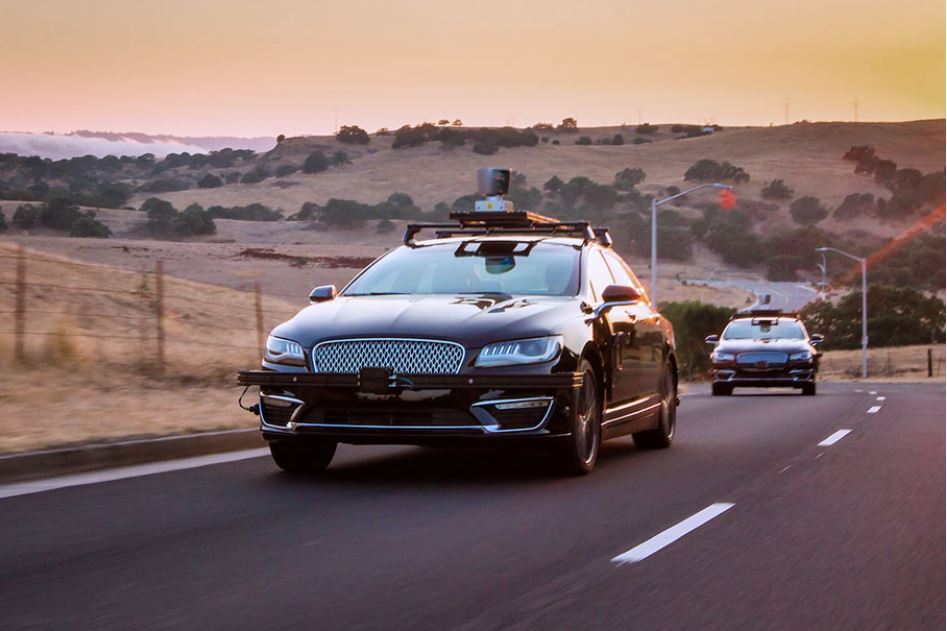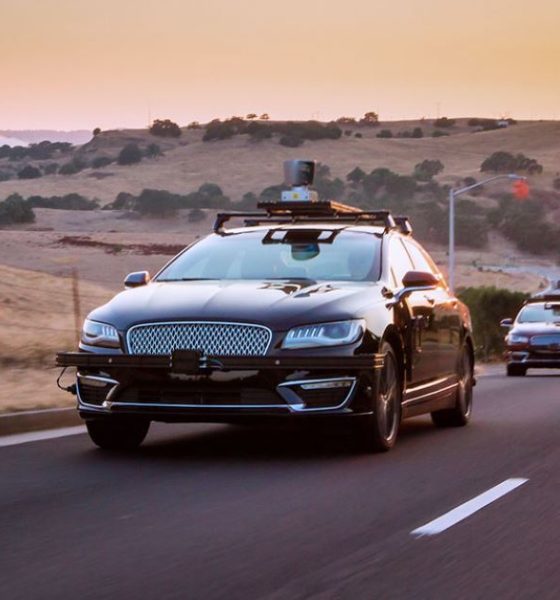

Lifestyle
Amazon enters self-driving car arena, invests in Aurora run by former Tesla execs
The self-driving startup led by ex-Tesla and ex-Google executives, Aurora Innovation, Inc. has landed $530 million dollars in funding after a successful second investment round, and one of its most notable contributors was Amazon. After dipping its toe in the robotic vehicle arena with Scout, an autonomous delivery robot, and collaboration with Embark, a self-driving truck startup, Amazon definitely seems interested in where the field is headed. Sequoia Capital and T.Rowe Price were also major investors during the investment round, altogether signaling a vote of confidence in the self-driving competition currently underway that Amazon apparently doesn’t intend to miss out on.
In California alone, over 60 companies have DMV permits to test autonomous vehicles on the roads (most commonly with safety drivers in attendance), although the burgeoning industry is still dominated by cash-rich giants like Alphabet Inc. and GM. Naturally, Amazon’s entry into the fray will now draw speculation about the company’s long-term plans. As the retail giant has ramped up its delivery schedules over the years to include same day warehouse and grocery deliveries, robots have already become part of its network by working alongside employees in its facilities. So, even if Amazon is agnostic about the vehicles it hopes to implement in the future, partnering with a company like Aurora for its transportation network development would probably work well with its current direction due to Aurora’s multi-platform software.
While Aurora has cultivated partnerships with the likes of Hyundai Motor Co. and Volkswagen AG, it has thus far remained independent, designing software, hardware, and data service products that would support a range of manufacturers and transportation networks. Overall, it intends to be the “nerve center” of autonomous vehicles, and that vision has been funneled into what the company calls the Aurora Driver platform. As described by the Aurora team in a blog piece published on Medium, “Moreover, all Aurora-powered vehicles carry a common set of self-driving hardware and run the same self-driving software, allowing Aurora and its partners to benefit from the collective scale of all participants…learn[ing] from the combined experience of all vehicles on the platform.”
Saw this on the I-10 today. Is amazon making driverless trucks? from r/SelfDrivingCars
Last month, a Reddit user spotted a self-driving semi truck run by Embark Trucks, a startup integrating its software systems into Peterbilt vehicles, hauling freight for Amazon along the I-10 interstate highway. The company aims to address the current driver shortage in the trucking industry driven by low wages and difficult schedules and job conditions. As an e-commerce company dependent on trucks as part of a larger shipping network, Amazon’s business collaboration with the company certainly seems to make sense, although with the autonomous trucking field becoming crowded, the retailer will certainly have options. Embark also received significant funding from Sequoia last year and has raised $47 million overall to date.
Aurora’s trio of founders has a type of rock star status in the robotics and engineering arenas, and they’ve been able to attract top talent to their company as a result, now employing over 250 people in the San Francisco Bay and Pittsburgh areas. Chris Urmson, CEO of Aurora, was a leader in Google’s self-driving project before it became Waymo; Drew Bagnell, CTO, was a founding member of Uber’s Advanced Technologies Group; and Sterling Anderson, chief product officer, was previously the lead of Tesla’s autopilot team. After leaving to join the new venture, Anderson was infamously sued by the electric vehicle manufacturer over a breach of contract, but eventually, the suit was settled for $100k without any wrongdoing found.

Lifestyle
Tesla Model S Plaid battles China’s 1500 hp monster Nurburgring monster, with surprising results
There is just something about Tesla’s tuning and refinement that makes raw specs seem not as game-changing.

The Tesla Model S Plaid has been around for some time. Today, it is no longer the world’s quickest four-door electric sedan, nor is it the most powerful. As per a recent video from motoring YouTube channel Carwow, however, it seems like the Model S Plaid is still more than a match for some of its newer and more powerful rivals.
The monster from China
The Xiaomi SU7 Ultra is nothing short of a monster. Just like the Model S Plaid, it features three motors. It also has 1,548 hp and 1,770 Nm of torque. It’s All Wheel Drive and weighs a hefty 2,360 kg. The vehicle, which costs just about the equivalent of £55,000, has been recorded setting an insane 7:04.957 at the Nurburgring, surpassing the previous record held by the Porsche Taycan Turbo GT.
For all intents and purposes, the Model S Plaid looked outgunned in Carwow’s test. The Model S Plaid is no slouch with its three motors that produce 1,020 hp and 1,420 Nm of torque. It’s also a bit lighter at 2,190 kg despite its larger size. However, as the Carwow host pointed out, the Model S Plaid holds a 7:25.231 record in the Nurburgring. Compared to the Xiaomi SU7 Ultra’s record, the Model S Plaid’s lap time is notably slower.
Real-world tests
As could be seen in Carwow’s drag races, however, Tesla’s tech wizardry with the Model S Plaid is still hard to beat. The two vehicles competed in nine races, and the older Model S Plaid actually beat its newer, more powerful counterpart from China several times. At one point in the race, the Xiaomi SU7 Ultra hit its power limit due to its battery’s temperature, but the Model S Plaid was still going strong.
The Model S Plaid was first teased five years ago, in September 2020 during Tesla’s Battery Day. Since then, cars like the Lucid Air Sapphire and the Xiaomi SU7 Ultra have been released, surpassing its specs. But just like the Model Y ended up being the better all-rounder compared to the BYD Sealion 7 and the MG IM6, there is just something about Tesla’s tuning and refinement that makes raw specs seem not as game-changing.
Check out Carwow’s Model S Plaid vs Xiaomi SU7 drag race video below.
Lifestyle
500-mile test proves why Tesla Model Y still humiliates rivals in Europe
On paper, the BYD Sealion 7 and MG IM6 promised standout capabilities against the Model Y.

BYD is seeing a lot of momentum in Europe, so much so that mainstream media has taken every opportunity to argue that the Chinese automaker has beaten Tesla in the region. But while BYD sales this year in Europe are rising and Tesla’s registrations remain challenged, the raw capabilities of vehicles like the Model Y are difficult to deny.
This was highlighted in a 500-mile challenge by What Car? magazine, which showed that the new Tesla Model Y is more efficient, cheaper to run, and more reliable than rivals like the BYD Sealion 7, and even the nearly 400 KW-charging MG IM6.
Range and charging promises
On paper, the BYD Sealion 7 and MG IM6 promised standout capabilities against the Model Y. The Sealion 7 had more estimated range and the IM6 promised significantly faster charging. When faced with real-world conditions, however, it was still the Model Y that proved superior.
During the 500-mile test, the BYD nearly failed to reach a charging stop, arriving with less range than its display projected, as noted in a CarUp report. MG fared better, but its charging speeds never reached its promised nearly-400 kW charging speed. Tesla’s Model Y, by comparison, managed energy calculations precisely and arrived at each stop without issue.
Tesla leads in areas that matter
Charging times from 25% to 80% showed that the MG was the fastest at 17 minutes, while Tesla and BYD were close at 28 and 29 minutes, respectively. Overall efficiency and cost told a different story, however. The Model Y consumed 19.4 kWh per 100 km, compared to 22.2 for MG and 23.9 for BYD. Over the full trip, Tesla’s charging costs totaled just £82 thanks to its supercharger network, far below BYD’s £130 and MG’s £119.
What Car? Magazine’s testers concluded that despite BYD’s rapid sales growth and the MG IM6’s seriously impressive charging speeds, Tesla remains the more compelling real-world choice. The Model Y just offers stability, efficiency, and a proven charging infrastructure through its Supercharging network. And as per the magazine’s hosts, the Model Y is even the cheapest car to own among the three that were tested.
Watch What Car? Magazine’s 500-mile test in the video below.
Lifestyle
Tesla Cybertruck slapped with world’s least intimidating ticket, and it’s pure cringe
One cannot help but cringe and feel second-hand embarrassment at the idea of a person just driving around with a stack of these babies.

A Cybertruck parked at Stanford Shopping Center in California was recently hit with what might be the most try-hard piece of paper ever slipped under a wiper blade: a “fake citation” accusing the driver of supporting a “fascist car.”
The note, shared on X by Tesla staff program manager Ryan Torres, quickly made the rounds on X, where it quickly gained attention as an example of how not to protest.
The world’s least intimidating ticket
According to the citation, the supposed “violation” was “driving a fascist car.” The remedial action? Take the bus, call an Uber, or ride a bike. The note also dubbed Elon Musk a “chainsaw-wielding Nazi billionaire.” Now, protests against Tesla and Elon Musk have become commonplace this year, but one cannot help but cringe and feel second-hand embarrassment at the idea of a person just driving around with a stack of fake anti-Tesla/Musk citations.
Torres pointed out the irony himself in his post on X. Tesla currently employs over 140,000 Americans, and SpaceX has put the U.S. firmly back at the top of space technology. As Torres put it, maybe the person behind the world’s least intimidating ticket should “read a book on innovation before vandalizing” other people’s property.
Peak performative clownery
Not to mention that the fake ticket’s logic collapses under its own weight. EVs like the Cybertruck are literally designed to reduce emissions, not “destroy the economy.” If anything, Tesla has bolstered the United States’ economy by fueling jobs in engineering, manufacturing, and clean energy. It’s not the first time a Tesla has been the target of vandalism or politically charged notes, but this one stands out for sheer cringe value.
Torres summed it up neatly: “Peak clownery.” On that point, at least, the citation earns full marks. In a way, though, perhaps cringe fake tickets are not as bad as the literal firebombs that were being thrown at Tesla stores and cars earlier this year because some critics were gleefully misinformed about Elon Musk.








